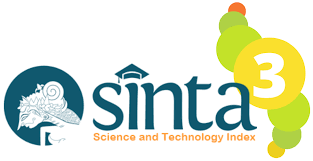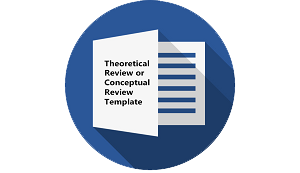Symbol and Theme on Robert Frost’ Poem by Using Biographical Perspective
DOI:
https://doi.org/10.30957/lingua.v17i1.621Keywords:
biographical perspective, symbol, themeAbstract
The objective of this research was to find out the symbol and theme that was used by Robert Frost in his literary works. It was also to elaborate on his biographical aspect of using symbols and themes in his poem. The method used to make this paper was a qualitative method. The writer also used two approaches to analyze this paper; first, the intrinsic approach consists of the symbol and theme and second, the extrinsic approach is a biographical perspective. The data were collected through library research. The results of this research indicated that the symbol on “Stopping by Woods on a Snowy Evening†was related to his nature or everyday life, while the theme on “Stopping by Woods on a Snowy Evening†was about the journey. The last, Robert Frost wrote his poem based on his experience of life when he was a teenager.
Downloads
References
Barneth, Judith. (2003). Introduction Literature. New York: Mc Graw Hill Companies.
Croft, Steven and Helen Cross. (2000). Literature: Criticsm and Style. UK: Oxford University Press.
Cuddon, J.A. (2014). Dictionary of Literary Terms and Literary Theory. Massachusset. Penguin Books.
Deepa, P., &Ilankumaran, M. (2018). Teaching Poetry Enhances Speaking Skills – an Analysis Based on Select Poems. International Journal of Engineering & Technology, 7(4.36), 619. https://doi.org/10.14419/ijet.v7i4.36.24211
Diyanni, Robert. (2001). Literature Reading, Fiction, Poetry and Drama. New York: Mc Graw. Hill Companies.
Famouse People. Robert Frost Biography. Retrieved in November 2019. http://www.thefamousepeople.com/profiles/robert-frost-133.php
Frye, Northrop, Sheridan Baker, and George Perkins. (1985). The Harper Handbook to Literature. New York: Harper and Row.
Garranty, Moenir. (1957). Critical Approach to Literature. UK: Oxford University Press.
Heavilin, Barbara A. (2013). From an Existential Vacuum to a Tragic Optimism: The Search for Meaning and Presence of God in Modern Literature. Cambridge: Cambridge Scholars Publishing
Hancock, Boa. (1972). Theory of Literature. United States: Company Publisher.
Harmon, William. (2003). A Handbook to Literature. 9thed. Prentice Hall: Upper Saddle River
Landy, Alice S. (1984). Heath literature for composition. United States: Heath.
Liu, Y. (2017). Research on Frost’s Poetry in the Light of Spiritual Ideology, 48(Iemetc), 45–49. https://doi.org/10.2991/iemetc-17.2017.9
Moniri, H., &Dohniyatkar, N. (2019). Symbol and Symbolism in Sacred Poetry, 8(2), 137–147.
Peck, John and Martin Coyle. (1984). Literary Terms and Criticsm. United States: Macmillan
Permatasari, I. E. (2016). An Analysis of Feminism in Maya Angelou’s Poems by Using Historicaland Biographical Approaches. Jurnal Ilmiah Bahasa dan Sastra, 3(2), 152–167.
Poem Hunter.Com. (2019). Poem of Stopping by Woods on a Snowy Evening Accessed in December 2019. http://www.m.poemhunter.com/poems/stopping by woods on a snowy evening
Wang, L. (2013). An artistic analysis on Robert Frost’s Desert Places. Theory and Practice in Language Studies. https://doi.org/10.4304/tpls.3.11.2092-2097
Wellek, Rene. (1962). Theory of Literature. United States: Harcourt, Brace, Company.
World Biography. Robert Frost Biography. Retrieved in November 2019. http://www.notablebiographies.com/Fi-Gi/Frost-Robert.html
Downloads
Published
How to Cite
Issue
Section
License
Authors who publish with this journal agree to the following terms:
- Authors retain copyright and grant the journal right of first publication with the work simultaneously licensed under a Creative Commons Attribution-ShareAlike 4.0 International License that allows others to share the work with an acknowledgement of the work's authorship and initial publication in this journal.
- Authors are able to enter into separate, additional contractual arrangements for the non-exclusive distribution of the journal's published version of the work (e.g., post it to an institutional repository or publish it in a book), with an acknowledgement of its initial publication in this journal.
- Authors are permitted and encouraged to post their work online (e.g., in institutional repositories or on their website) prior to and during the submission process, as it can lead to productive exchanges, as well as earlier and greater citation of published work (See The Effect of Open Access).















